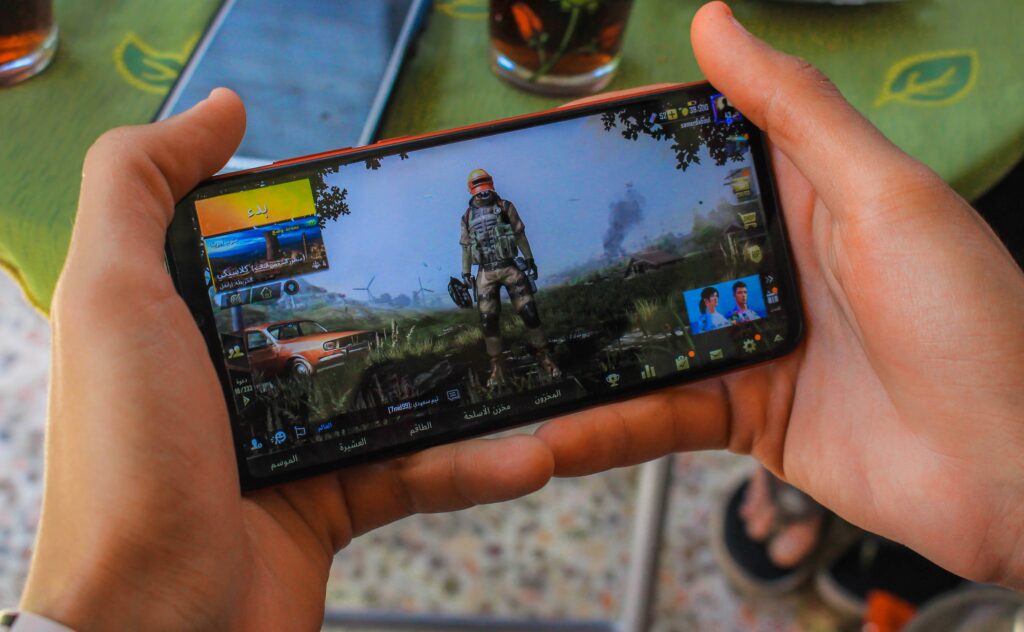A video game is a game managed by an electronic device that allows you to interact with the images on a screen. The term generally tends to identify software, but in some cases, it can also refer to a hardware device dedicated to a specific game. Anyone who uses a video game is called a gamer or “player” and uses one or more input devices called controllers, such as a gamepad, joystick, mouse, and computer keyboard.
Born in the 1950s in scientific research circles and in American universities, the video game had its development starting from the second half of the 1970s. In 1952 in the laboratories of the University of Cambridge AS Douglas, as an example for his doctoral thesis, he created OXO, the transposition of the computer game Tris. This is usually considered technically the first video game as it used a cathode screen for display. Its purpose, however, was not to entertain users but to complete Douglas’s thesis. In 1958, physicist Willy Higinbotham of Brookhaven National Laboratory, noting the lack of interest students had in the subject, made a game, Tennis for Two, which had the task of simulating the physical laws that could be found in a tennis match: the means used was an oscilloscope. This is remembered as a university experiment rather than a game.

In 1961, six young scientists from MIT (Massachusetts Institute of Technology) managed to give movement to bright dots on the screen of a PDP-1: Spacewar was born! , the first video game properly designed for a play that history can remember. But the great development of video games will only take place in the second half of the seventies. The first video games appeared in the 1970s and were limited to consoles with a black and white video set up in public places. The games had essential graphics (like the classic Pong ). More so, the game developed by Higinbotham was a schematic simulation in which there was a vertical line on the screen to represent the net as seen from above and a dot on the screen for the ball. There were no markers for the rackets and by acting on the control knob only one player could make the ball “bounce” from one side of the screen to the other: if you did not turn the knob before the end of the screen, the ball continued its run and the game would restart without assigning any score with a new ball. In fact, more than a game or video game it was a demonstration of how one could interact with a computer.
Douglas’s project, like Higinbotham’s, was indeed a game but certainly not a video game. It was more a scientific experiment than an invention usable by ordinary people. The Space War Russell instead was a real game and just based on the display vector. But for the complexity of the project as well as the difficulty of adapting this videogame on computers, it was not until the end of 1973 when Space War reached the general public as a coin-op game. The first man who instead conceived the idea of video games, in the sense that he would later be known, with normal living room TV screens, was Ralph Baer. The concept of a player, a game, a television, and a box connected to it in which to place video games is his.

In the 1960s, Ralph Baer was one of the world’s first television engineers and worked at Sanders and Associates (a company that developed aerial and submarine radar systems). In 1966, during a business trip, he wrote down some sketches and drawings on a notebook trying to outline some thoughts on the way in which one could interact (playing) with a normal home television. These notes convinced Sanders to develop the project and to file the patents of that idea as early as 1966, furthermore the company encouraged Baer to continue its development, providing him with a duly equipped room on the recommendation of the same engineer. After a few months, Baer had a bright dot that he could move at command on a regular TV screen.
Although Atari made black dots on a white screen world famous in the early 1980s, the technology invented by Baer was the first technology that was used in the early 1970s to create the first video game console in history: the Magnavox Odyssey. The prototype of the Magnavox Odyssey (called in Sanders-Brown Box or just Odyssey) was already ready in 1970 and the commercialization in the series began in Christmas 1972 with a game of ping-pong. It was basically a ball (a white dot on a black screen) that was hit horizontally on the TV screen by two rackets (two white sticks on a black screen), controllable by players (maximum 2) with two controllers (currently we would call them joypad ) with wheels, which allowed to move the rackets vertically.
The language of gameplay

As James Paul Gee suggests, video games are very different from other types of media such as film, literature, or theater. They have several characteristics that make them unique and operate differently from others, for example, the language of gameplay is unique among traditional narrative media and it has also been authoritatively stated that it is the interactivity that has distinguished video games from other forms of mass media entertainment; precisely this characteristic allows the video game to exercise a potential of immersion and attraction that other media do not have.
More so, it is well known that one of the most popular gaming platforms is online casinos but how has the casino game changed over the years? Before the arrival of the internet, and of recent technologies, you could only play at the casino by physically going to the various casinos around the world. Among the most famous we remember that of Montecarlo, those of Las Vegas, that of Lisbon, but above all the Casino Venetian in Macau, China, which covers an area of 546,000 square meters, with 3,000 gaming machines.
The arrival of technology has brought the casino world just a click away. In fact, in today’s times, playing online casino games is very simple. Just connect to one of the many specialized gaming apps, such as Slotpark, and let your fun begin. Pc, tablet, or smartphone, the world of online gaming is now within reach. In short, many games for any type of passion and personal taste. The world of online casinos continues its rise in the present, but above all in the future.
Technological progress

The video game is a relatively recent platform (especially when compared with the history of other media), and only in recent decades has it experienced a rapid development, which has allowed it to grow and to overwhelm, more than other media, criticism moved against it rightly or wrongly.
All this was possible thanks to the fact that the video game, more than any other (even more than a film), is strongly linked to technological progress. This last feature gives the video game enormous potential and in fact, as the sociologist Alberto Abruzzese said, “video games are our most advanced frontier and our most fascinating future”.
Films vs video games

All this makes us understand how this industry has become important and has enormous potential. But with cinema, the world of video games seems to have made a pact: the plots of many films produced today are admittedly borrowed from them. The transposition from film to video game was a widespread practice already in the early eighties; if you exclude Superman, which at the time was famous in the cinema but was born as a comic, the first title officially is taken from a film was Towering Inferno in 1982 (from the film The Crystal Inferno).
Films are joined by television series, comics, novels, magazines, exhibitions, and fairs. Since the 1990s, television programs dedicated to the world of video games have appeared, such as X-Play, and entire television channels dedicated to video games, such as Game Network and G4. Electronic sports and video game competitions are also organized, even at a professional level. The recognition of the cultural importance of video games is manifesting itself with the entry of the subject into universities and with the proliferation of scientific publications on the subject.
